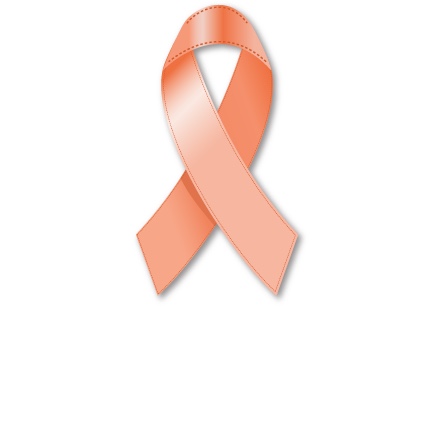Auckland, New Zealand, 31 May 2017: A 33 year old Wellington mother of two has become the first New Zealand patient to be treated with a novel brain cancer visualisation drug that ‘lights up’ tumours during surgery to enable more complete removal of the malignant tissue.
GLIOLAN® (aminolevulenic acid: ALA) is taken as a drink three hours prior to surgery and works by causing cancerous tissue in the brain to fluoresce. This enables surgeons to more clearly see and better remove highly aggressive brain tumours known as glioblastoma multiforme, or GBM.
The drug will now be reimbursed for New Zealand patients at District Health Boards (DHB) hospitals from tomorrow, 1 June, following PHARMAC’s decision to fund GLIOLAN for newly diagnosed, untreated patients.
It is expected around 100 NZ brain cancer patients a year will now benefit from this cutting-edge medicine, which has been shown to almost double the rate of complete resection and six-month progression-free survival in patients with GBM1.
The first patient operated on using GLIOLAN is Wellington mother of two Alice Chambers-Smith, who was diagnosed with a brain tumour just weeks ago after moving back to NZ from England with her young family late last year.
Her doctors – who suspected her cancer may be gliolblastoma multiforme – were able to access GLIOLAN on a compassionate basis prior to the public reimbursement.
The young mother, who has a 3 year-old daughter and 6 year-old son, said she hoped GLIOLAN would enable her doctors to remove as much of her cancer as possible.
“I just want to do every single possible thing I can to be the tiny statistic that doesn’t lose this battle,” she said.
“I think the PHARMAC decision to make this technology available can only be a good thing.”
Leading New Zealand neurosurgeon Mr Kelvin Woon was the first neurosurgeon to use the technology in New Zealand. “GLIOLAN provides a great opportunity for NZ patients who are affected by these highly malignant tumours,” he said.
“We are pleased to be pioneering this operation at the Wellington Regional Hospital as we endeavour to improve outcomes for patients with these aggressive brain tumours.
“Although not curative, GLIOLAN helps us to better visualise what can be poorly-defined tumour margins, which limits our ability to resect the tumour macroscopically.
“Using GLIOLAN, we can more clearly see what is brain tissue and what is tumour. This gives us the confidence to be more aggressive and strive for maximum resection. This is important, because the evidence points to maximum (complete macroscopic) resection and increases the chances of extending overall survival.” 2
GLIOLAN is given to patients as a drink prior to surgery. The drug is preferentially taken up by the malignant tumour tissue.
During surgery, a neurosurgical microscope fitted with a specialised blue operating light is used, which causes cancerous tissue containing the drug to glow fluorescent pink whilst normal brain tissue appears blue. This enables neurosurgeons to better visualise these tumours and more completely remove them, whilst sparing the neighbouring healthy brain tissue.
The drug is made available in New Zealand by international biopharmaceutical company Specialised Therapeutics Ltd, an affiliate of Specialised Therapeutics Asia (ST Asia).
Chief Executive Officer Mr Carlo Montagner applauded the PHARMAC decision to enable GLIOLAN to be used in complex neurosurgery cases for eligible patients.
“In this region and around the world, these patients have typically had a very poor prognosis,” he said.
“With current standard chemotherapy and radiation treatment, these patients have a median overall survival of 12, maybe 15 months.3
“GLIOLAN has been shown to help GBM patients survive longer without tumour progression compared to standard surgical procedures. Any drug or technology that enables patients additional time with their families is extremely valuable.”
International studies have shown that the use of GLIOLAN during brain tumour surgery has nearly doubled the rate of achieving a complete resection of the main tumour bulk, which in turn has resulted in a doubling of the number of patients without progression of their brain cancer six months after surgery.1
The pivotal Phase III study published in The Lancet Oncology Medical Journal reported complete resection of malignant brain tumour tissue in 65% of patients receiving GLIOLAN compared to 36% of patients in the study’s control arm (difference between groups 29% [95% CI 17–40], p<0·0001). Six-month progression-free survival was achieved in 41% of patients receiving GLIOLAN compared to 21% of patients who were operated on without the use of the drug (difference between groups 20% [95% CI 9·1–30·7], p=0·0003)1.
GLIOLAN was first approved in Europe in 2007 and is marketed by medac GmbH in Europe, Africa, South America and Asia (excepting Japan and Korea). Around 500 Australian patients have been operated on using GLIOLAN since 2012.
About GLIOLAN®
The active substance in GLIOLAN, aminolevulinic acid (ALA), is a photoreceptive compound which is absorbed by cells in the body, where it is converted by enzymes into fluorescent chemicals, particularly protoporphyrin IX (PPIX). Since glioma cells take up more of the active substance and convert it more rapidly into PPIX, higher levels of PPIX accumulate in the cancer cells than in normal tissue. When illuminated under blue light of a specific wavelength, the PPIX in the tumour glows an intense red, while the normal brain tissue appears blue. This enables the surgeon to see the tumour more clearly during brain surgery and to remove it more accurately, sparing healthy brain tissue.
Like all medications GLIOLAN may cause side effects. GLIOLAN should not be used in patients with hypersensitivity to ALA or porphyrins, or in cases of acute or chronic porphyria, or in pregnancy. Cardiac disorders, gastrointestinal disorders and skin and subcutaneous disorders are all reported as being uncommon.
About the Specialised Therapeutics Group
The Specialised Therapeutics (ST) group of companies collaborates with leading global pharmaceutical and diagnostic companies to bring novel, innovative and life changing healthcare solutions to patients affected by a range of diseases in Australia, New Zealand and throughout South East Asia. ST is committed to making new and novel therapies available to patients around the world, with a broad therapeutic portfolio spanning oncology, hematology, urology and ophthalmology. Additional information can be found at www.STAbiopharma.com
References
- Stummer W, Pichlmeier U, Meinel T, et al., Fluorescence-guided surgery with 5-aminovulinec acid for resection of malignant glioma: a randomised controlled multicentre phase III trial, Lancet Oncol, 2006;7:392-401
- S.J. Hentschel and Sawaya, R. Optimizing Outcomes with Maximal Surgical Resection of Malignant Gliomas. Cancer Control 2003; Vol 10: 109-112
- Stupp R, et al. N Engl J Med 2005; 352: 987-996


